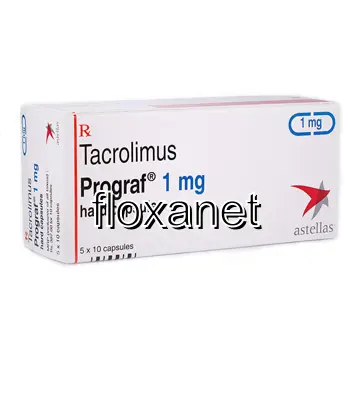| Package | Dosage | Price | Price per Dose | |
|---|---|---|---|---|
| Dosage: 0,5mg | ||||
| 90 pill | 0,5mg | $494.11 | $5.48 | |
| 60 pill | 0,5mg | $351.15 | $5.86 | |
| 30 pill | 0,5mg | $195.69 | $6.52 | |
| 20 pill | 0,5mg | $137.40 | $6.87 | |
| 10 pill | 0,5mg | $73.55 | $7.41 | |
| Dosage: 1mg | ||||
| 90 pill | 1mg | $693.99 | $7.72 | |
| 60 pill | 1mg | $496.89 | $8.29 | |
| 30 pill | 1mg | $292.85 | $9.74 | |
| 20 pill | 1mg | $217.90 | $10.88 | |
| 10 pill | 1mg | $122.13 | $12.27 | |
| Dosage: 5mg | ||||
| 20 pill | 5mg | $662.06 | $33.08 | |
| 10 pill | 5mg | $370.58 | $37.05 | |

Tacrolimus Description
Overview of Tacrolimus
Tacrolimus is a potent immunosuppressant medication primarily used to prevent organ rejection in transplant patients. It belongs to the class of drugs called calcineurin inhibitors, which work by suppressing the activity of the immune system. By doing so, Tacrolimus helps the body accept new organs such as kidneys, liver, or heart, reducing the risk of rejection.
How Tacrolimus Works
The medication acts by inhibiting T-lymphocyte activation, an essential process in the immune response. It binds to a protein called FK-binding protein (FKBP-12), forming a complex that interferes with calcineurin, an enzyme responsible for activating T-cells. This suppression ultimately decreases the production of cytokines like interleukin-2, critical for immune cell proliferation.
Uses and Benefits
Tacrolimus is most commonly prescribed after solid organ transplants. Its effectiveness in reducing rejection rates has been well-established. Patients who are compliant with their Tacrolimus regimen tend to experience better graft survival rates. Additionally, Tacrolimus can be used in certain cases of autoimmune diseases, although this is less common.
Administration and Dosage
The medication is usually available as capsules, oral solution, or as intravenous infusions in hospital settings. Dosing depends on several factors, including the patient’s weight, kidney function, and the type of transplant. Physicians often start with a standard dose and then adjust based on the patient’s blood level monitoring. Consistency in taking the medication is crucial for maintaining therapeutic levels and avoiding rejection or toxicity.
Potential Side Effects
Like all immunosuppressants, Tacrolimus carries the risk of side effects. Common issues include tremors, headaches, high blood pressure, and nausea. More serious concerns involve kidney toxicity, blood sugar fluctuations leading to diabetes, neurological problems, and an increased susceptibility to infections. Regular blood tests are essential to monitor drug levels and assess organ function during treatment.
Precautions and Interactions
Patients should inform their healthcare providers about all medications they take, as Tacrolimus interacts with many drugs, including certain antibiotics, antifungals, and blood pressure medications. These interactions can alter Tacrolimus levels, either increasing toxicity or reducing its effectiveness. It is also important to avoid grapefruit and grapefruit juice, which can affect drug metabolism.
Patient Experience and Considerations
Many users find Tacrolimus to be highly effective in maintaining transplant health. However, adherence to medication schedules and regular monitoring are vital for success. Some patients report experiencing side effects that can impact daily life, such as fatigue or mood changes. Open communication with healthcare providers enables the management of these issues and adjustment of treatment if necessary.
Conclusion
Overall, Tacrolimus is considered a cornerstone medication for transplant recipients because of its proven ability to prevent organ rejection. Its benefits are significant when used correctly, alongside appropriate medical supervision. While the potential for adverse effects exists, careful monitoring and adherence to prescribed guidelines can help manage these risks effectively. Patients should always follow their healthcare provider's instructions to ensure the best possible outcomes with this medication.
